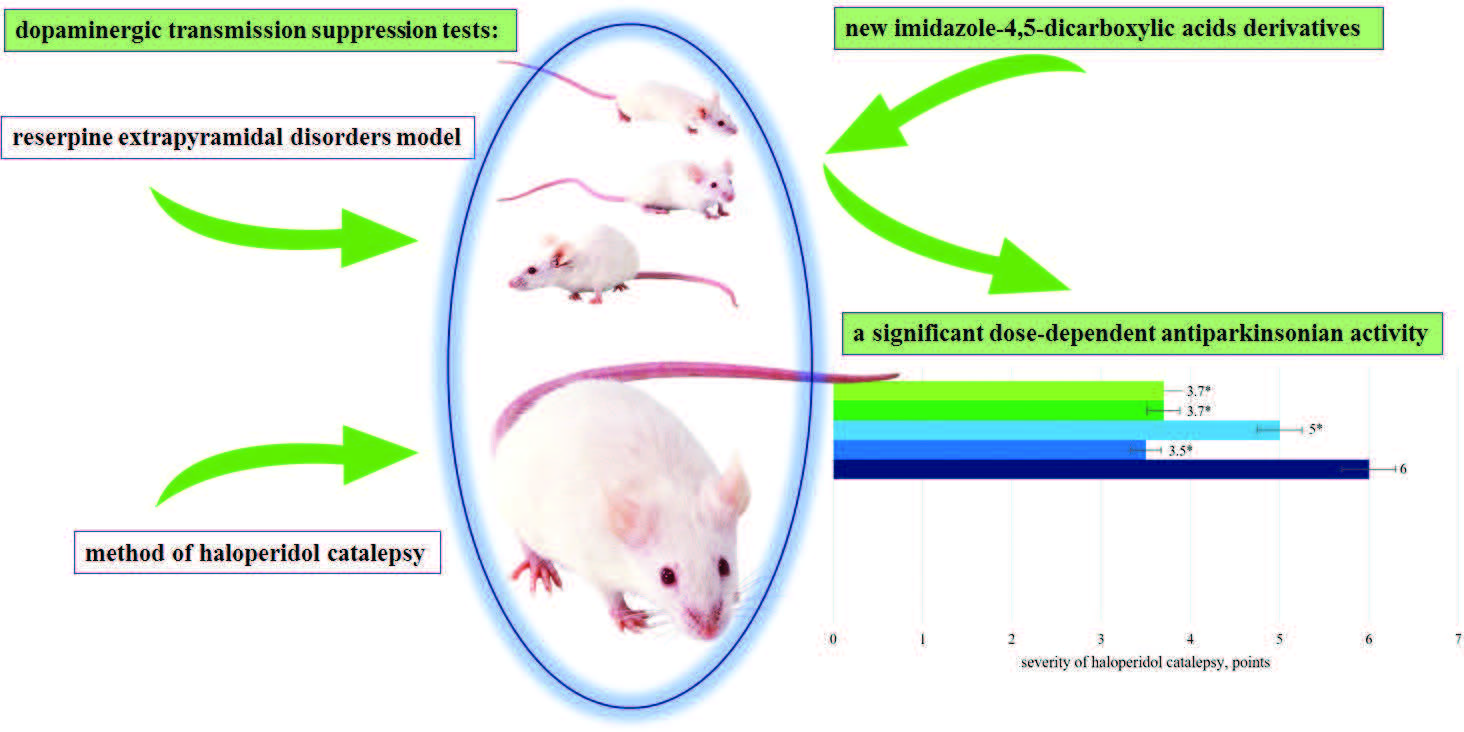Pharmacological activity of new imidazole-4,5-dicarboxylic acid derivatives in dopaminergic transmission suppression ttests in mice and rats
DOI:
https://doi.org/10.3897/rrpharmacology.6.57883Abstract
Objective: To study the antiparkinsonian activity of new 1,2-substituted imidazole-4,5-dicarboxylic acids in dopaminergic transmission suppression tests in mice and rats.
Materials and methods: On a model of reserpine extrapyramidal disorders, the derivatives of imidazole-dicarboxylic acids (IEM2258, IEM2248, IEM2247) were injected into the lateral brain ventricles of the mice 30 minutes after injecting reserpine at the doses of 0.1–0.5 mmol. Locomotor activity was analyzed in the Open-field test 2 hours later. In the catalepsy model, the studied agents were injected, using a pre-implanted cannula, with a simultaneous intraperitoneal injection of haloperidol. The severity of catalepsy was assessed with the Morpurgo method. Amantadine was used as a comparator drug in all the tests.
Results: It was shown that IEM2258 significantly increased the main indicators of locomotor activity in the Open-field test at all the studied doses. The value of the antiparkinsonian effect of IEM2258 at doses of 0.4–0.5 mmol significantly exceeded that of amantadine. The antiparkinsonian effect of IEM2247 was maximally expressed and was significantly different from those in the control and comparator group at doses of 0.2 and 0.3 mmol. For all the experimental groups, a significant decrease in the manifestations of catalepsy in comparison with control indexes was determined.
Discussion: The results made it possible to suggest the involvement of imidazole-4,5-dicarboxylic acids derivatives in the process of experimental improvement of dopaminergic neuromodulation and efficiency in animals.
Conclusion: The data showed a significant dose-dependent antiparkinsonian activity of new imidazole-4,5-dicarboxylic acid derivatives, which makes it promising to develop these agents and to further search for effective and safe antiparkinsonian drugs in this pharmacological class.
Graphical abstract:
 Русский
Русский
 English
English

